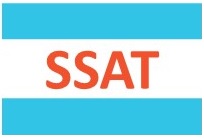As you know last week, we covered the individual sections of the SSAT test. Now is the time to focus on the strategies to prepare for SSAT effectively.
The SSAT covers math, reading, and verbal skills. The test was created to measure the ability in particular skills and is not considered an achievement test, and SSAT scores are not a part of your college application.
What’s on the SSAT?
- Quantitative (Math): Composed of math computation.
- Verbal: Vocabulary and analogy questions.
- Reading: Reading passages.
- Writing Sample: The writing sample is not scored, but schools use it to assess writing skills.
- Experimental: Mixed content questions (verbal, reading, and math). This section does not count toward reported scores.
The Exam is Administered on Three Levels:
| Current Grade | Appropriate Test Level | Test Duration |
| Grades 3-4 | SSAT Elementary-Level Test | 2 hours, 5 minutes |
| Grades 5-7 | SSAT Middle-Level Test | 3 hours, 10 minutes |
| Grades 8-11 | SSAT Upper-Level Test | 3 hours, 10 minutes |
Elementary Level SSAT Test Breakdown:
| Section | # Of Question | Type of Question | Duration |
| Quantitative/Math | 30 | Basic addition, subtraction, multiplication, and division, Place value, Ordering of numbers (greater than, less than), Fractions, Basic concepts of geometry, Interpretation of graphs | 30 |
| Verbal | 30 | Vocabulary, Verbal Reasoning, Ability to Relate Ideas Logically | 20 |
| Break | – | – | 15 |
| Reading | 28 | Main Ideas, Details, Inferences, Word Meanings, Author’s Purpose, and Tone, Opinions, and Arguments, Predictions | 30 |
| Writing Sample | 1 prompt | A topic statement which you will be asked to respond to (support or argue), using specific examples from personal experience, current events, history, or literature | 15 |
| Experimental Section | 15-17 | Verbal, Reading, and Quantitative-style questions | 15 |
Middle/Upper Level SSAT Test Breakdown:
| Section | # Of Question | Type of Question | Duration |
| Writing Sample | 1 | A topic statement which you will be asked to respond to (support or argue), using specific examples from personal experience, current events, history, or literature | 25 |
| Break | – | – | 5 |
| Quantitative/Math | 30 | Number Concepts and Operations, Algebra, Geometry, Measurement, Data Analysis, Probability | 30 |
| Reading | 40 multiple choice (7 passages) | Main Ideas, Details, Inferences, Word Meanings, Author’s Purpose, and Tone, Opinions, and Arguments, Predictions | 40 |
| Break | – | – | 10 |
| Verbal | 60 multiple choice (30 synonyms and 30 analogies) | Vocabulary, Verbal Reasoning, Ability to Relate Ideas Logically | 30 |
| Quantitative (Math) | 25 | Number Concepts and Operations, Algebra, Geometry, Measurement, Data Analysis, Probability | 30 |
| Experimental Section | 16 | Verbal, Reading, and Quantitative-style questions | 15 |
Smart Strategy for SSAT Preparation:
Step1: – Decide the target score goal.
Step2: – Take the practice test.
Step3: – Find the difference between the Test score and the Targeted score.
Step4: – Analyze the practice test.
Step5: – Identify the strengths and areas of improvement subject-wise and topic-wise.
Step6: – Prepare the first high-priority subject and topics.
Step7: – Take practice individual subject tests to check the improvement.
Step8: – Take a full-length test before the actual test
.
You can see how quickly you can unravel like this. Before you know it, you’re scoring way worse than you ever did on a practice test.
To Prepare smartly for the SSAT, download our free e-book “Smart and effective way SSAT prep”.
If you already know about SSAT and preparing for the upcoming SSAT test, then check the Socrato YouTube channel for Practice Test scoring and diagnostic report.










